In today’s digital era, Web design is vital for businesses to create a strong visually appealing online presence which reflects their Brand Identity and core values which helps to build trust and credibility among visitors, leading to positive customer behaviour.
The role of web design in portraying brand identity has become crucial amidst numerous websites competing for attention.
To stand out from the crowd businesses need to create eye-catching visuals that resonate with the brand guidelines, core values and personality. For this professional website design services come in handy.
For Example, if you check out Apple’s website you can see its minimalist and sleek design. It reflects the company’s emphasis on simplicity, elegance, and cutting-edge technology.
The use of clean lines, high-quality images, and white space resonates with their brand guidelines and showcases their commitment to aesthetics and user experience.
Brand identity is like a fingerprint, a unique reflection of a company’s heart and values.
Picture a plastic bottle, adorned with a vibrant red cap – a simple sight that instantly whispers “Coca-Cola” in your mind. This strong association is a result of its distinctive layout, unique colour, and other visual elements.
Brand design is an integral part of brand identity, representing the visual aspects that communicate your company’s values, address users, and highlight unique selling points.
To create a robust brand identity:
- Understand Your Brand: Define your mission, values, brand personality, unique positioning, and brand voice. Knowing these elements is essential before building your brand identity.
- Gain Clarity: Brainstorm and ask questions about your business’s purpose, beliefs, strengths, uniqueness, and desired customer perceptions
Crafting an authentic brand identity ensures your company’s visual representation aligns with its core values, setting you apart from competitors and resonating with your target audience.
Now, let’s explore how to effectively translate these brand elements into web design, creating a cohesive and engaging online presence. We’ll also look at examples of leading brands with unique website designs.
Use the brand’s colour palette consistently throughout the website. The colours should evoke the brand’s personality and emotions associated with it.
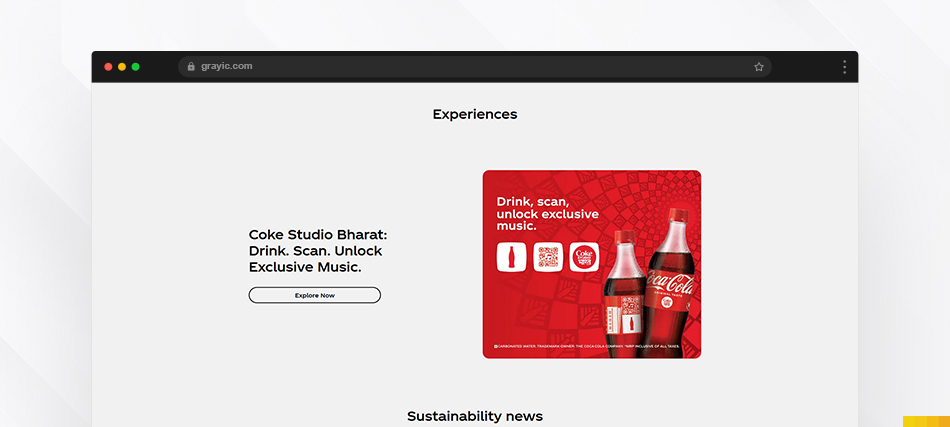
Incorporate primary brand colours for headers, backgrounds, buttons, and other design elements.
Coca-Cola maintains its signature red colour for various elements.
Apply the brand’s chosen typography to the website’s text content. Use the same font styles and sizes to maintain consistency. Typography should align with the brand’s tone and convey its personality effectively.
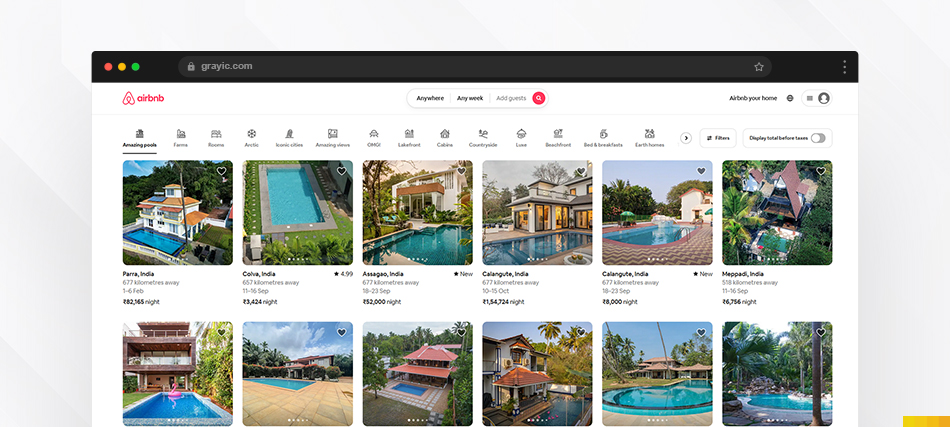
Airbnb uses a friendly and modern font style consistent with its identity.
Feature the brand logo prominently on the website, typically in the top-left corner. Ensure that the logo is clickable and serves as a link back to the homepage for easy navigation.

Apple incorporates its iconic Apple logo in the header and favicon.
Incorporate brand-specific visual elements, such as icons, illustrations, or patterns, to reinforce the brand identity. These elements should align with the brand’s style and messaging.
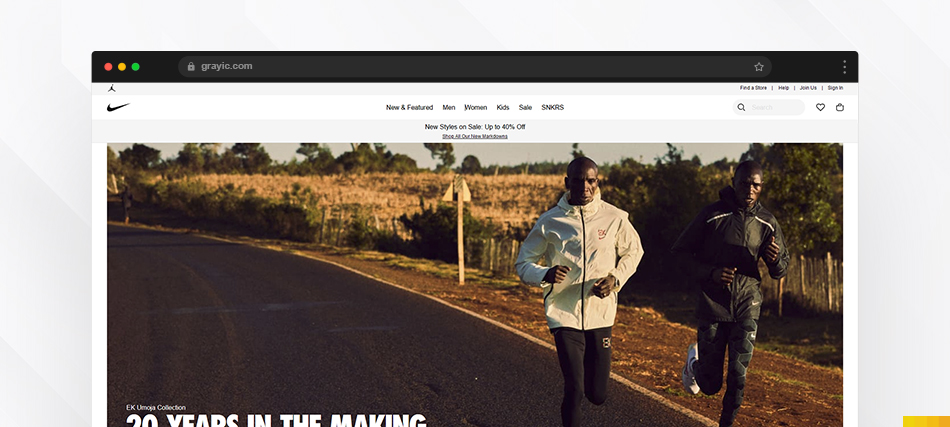
Nike uses powerful visuals of athletes and sports to represent its active and motivational brand.
The website should reflect the brand’s personality. If the brand is known for being innovative and creative, consider a unique and unconventional layout. If it’s more professional and corporate, stick to a clean and organized structure.
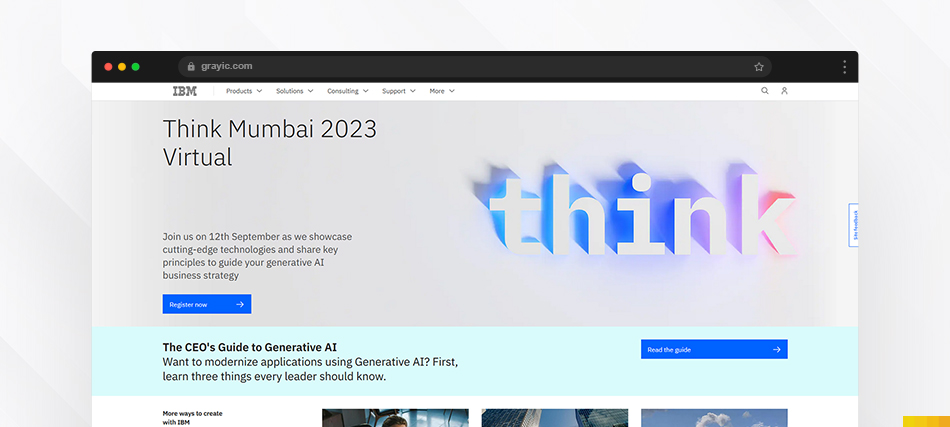
IBM is a global technology and consulting company with a reputation for professionalism and expertise.Its website layout adopts a clean and organized structure with a focus on clear navigation, straightforward typography, and a minimalist colour palette. The layout conveys a sense of reliability and professionalism.
Design an intuitive navigation system that aligns with the brand’s simplicity or complexity. Ensure that users can easily find what they need and that the user journey reinforces the brand’s story.
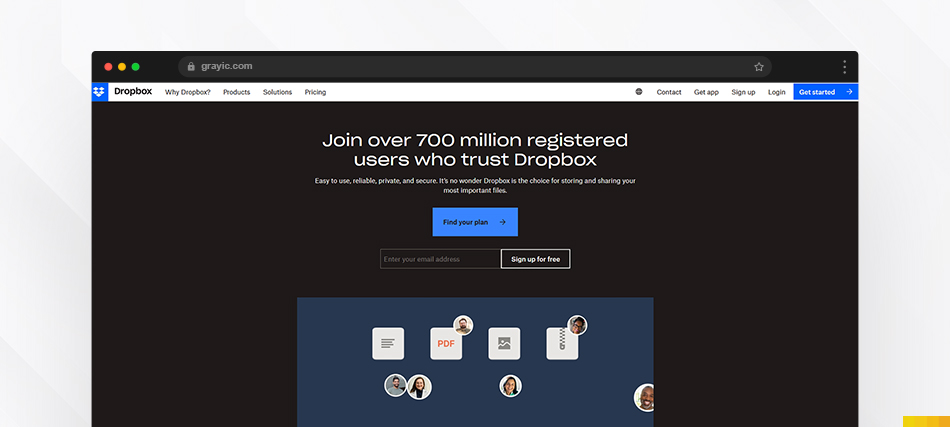
Dropbox has a straightforward and easy-to-navigate layout.
Integrate key brand messages, taglines, or slogans into the website’s content. These messages should be consistent with the overall brand identity and help reinforce the brand’s positioning.
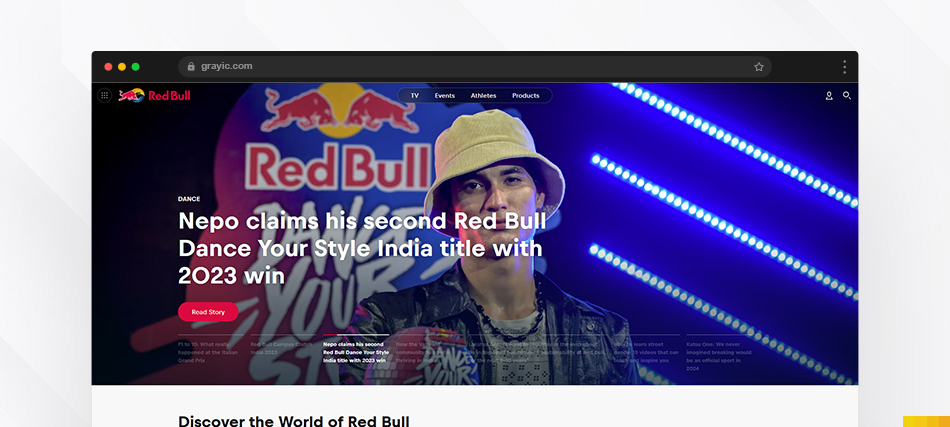
Red Bull’s website delivers brand messages focused on adventure, extreme sports, and pushing boundaries, such as “Red Bull gives you wings.”
Design buttons, forms, and other UI elements with the brand’s style in mind. Customized UI elements that match the brand identity can make the website more memorable and engaging.
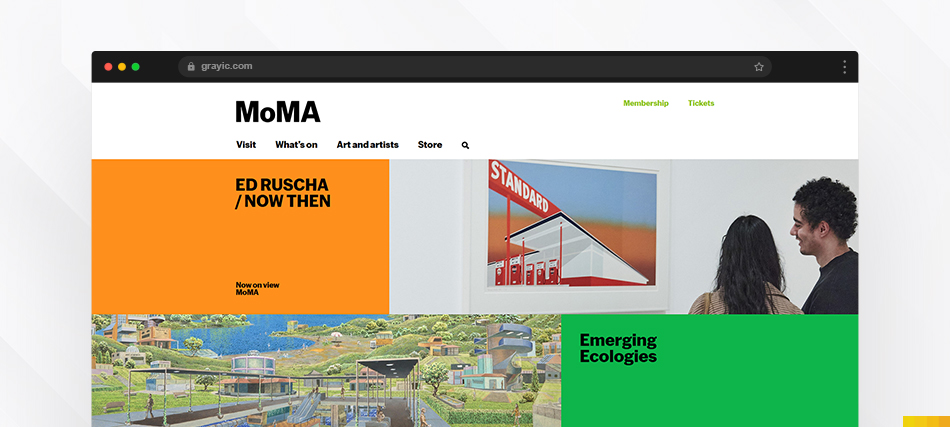
MoMA (Museum of Modern Art) makes it easy for the audience to understand elements easier
If the brand identity allows for it, incorporate subtle animations or interactive elements that align with the brand’s tone. These can add a sense of dynamism and delight to the user experience.
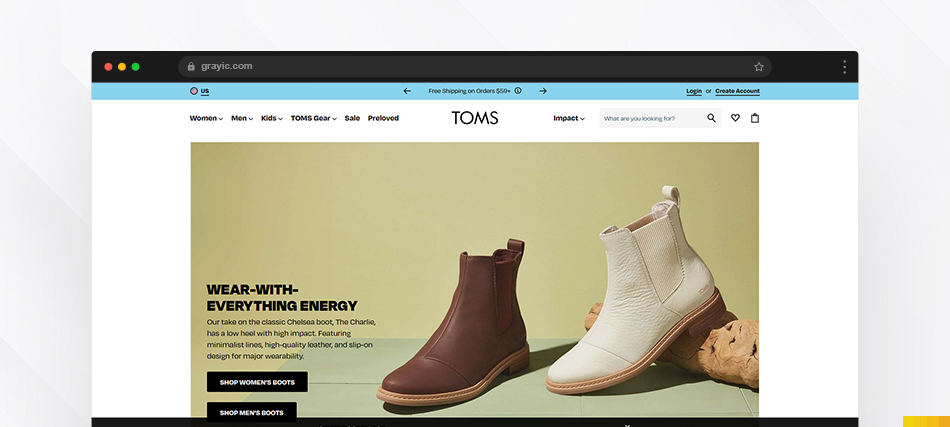
Toms uses animations to share stories of impact and interactivity to involve visitors in their charitable initiatives.
Ensure that the brand identity translates effectively to mobile devices. The website should maintain its look and feel across various screen sizes, providing a consistent experience for users on all platforms.
Starbucks maintains a consistent look and feel on desktop and mobile platforms.
All these elements make your website aligned with your brand identity. It’s important to keep in mind that your brand identity should evolve as your business grows and changes. Make sure your website reflects your current brand identity.
By following these tips, you can translate your brand identity to your web design in a way that is consistent, cohesive, and visually appealing. This will help you create a website that is both effective and on-brand.
There are few more things to keep in mind when translating your brand identity to web design:
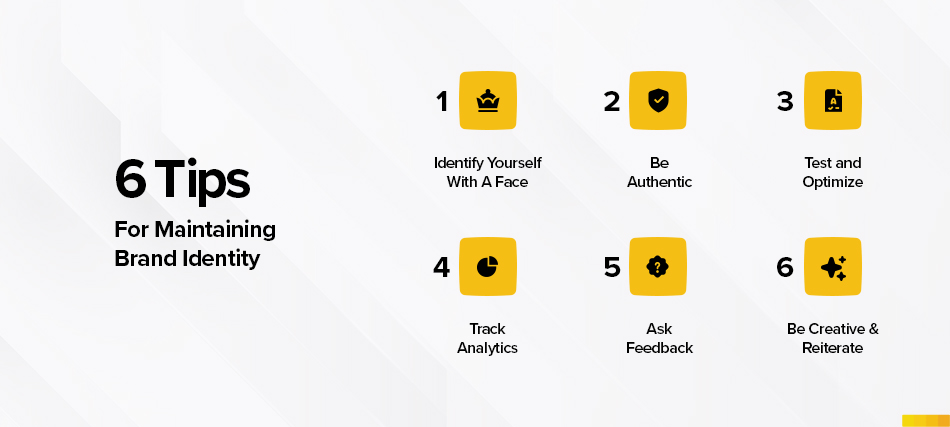
Your brand voice is the way you communicate with your customers. It should be consistent across all of your marketing materials, including your website.
Your website should be a true reflection of your brand. Don’t try to be something you’re not.
Don’t be afraid to get creative with your web design. Use your imagination to create a website that is both visually appealing and on-brand.
Always test and optimize your website regularly to make sure it’s performing as well as it can which includes testing different design elements, traffic sources, and marketing campaigns.
Ask your customers what they like and don’t like about your website, and use their feedback to make changes that will improve the user experience.
Once your website is up and running, use analytics to track its performance. This will help you to see how visitors are interacting with your site and make necessary changes to improve it.
Crafting a web design that authentically embodies your brand identity demands meticulous thought and a comprehensive strategy. Embracing the consistent approach empowers you to sculpt a website that not only mirrors your brand’s core but also enthrals visitors, cultivating a robust digital footprint. A well-crafted website is not only visually appealing and user-friendly but it will also connect with your target audience and achieve your business goals.
